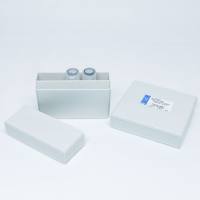Animal Models for Caffeine Exposure in the Perinatal Period
互联网
580
Caffeine is a widely used compound found both in drug preparations and in commonly consumed foods and beverages. Most human exposure occurs primarily through consumption of caffeinated beverages (e.g., coffee, tea, and soft drinks) such that, across all age groups, the average daily dose of caffeine ranges from <1 mg/kg in infants to approx 3 mg/kg in adults, including pregnant women (Lachance, 1982 ; Neims and von Borstel, 1983 ; Sobotka, 1989 ; Benowitz, 1990 ). Because caffeine is a pharmacologically and behaviorally active chemical, exposure of the developing organism to caffeine may have far-reaching, long-term consequences. Such developmental exposure may occur in utero as the result of consumption of caffeine by the pregnant woman or postnatally as the result of therapeutically administered caffeine to premature infants with apnea of prematurity. This chapter will deal with animal models for such perinatal caffeine exposure. In order to facilitate extrapolation of results from experimental animals to humans, the factors that must be taken into account in the design and interpretation of these studies will be presented. The neurochemical mechanisms whereby caffeine exposure may affect subsequent neural development and behavior/function will also be discussed.








